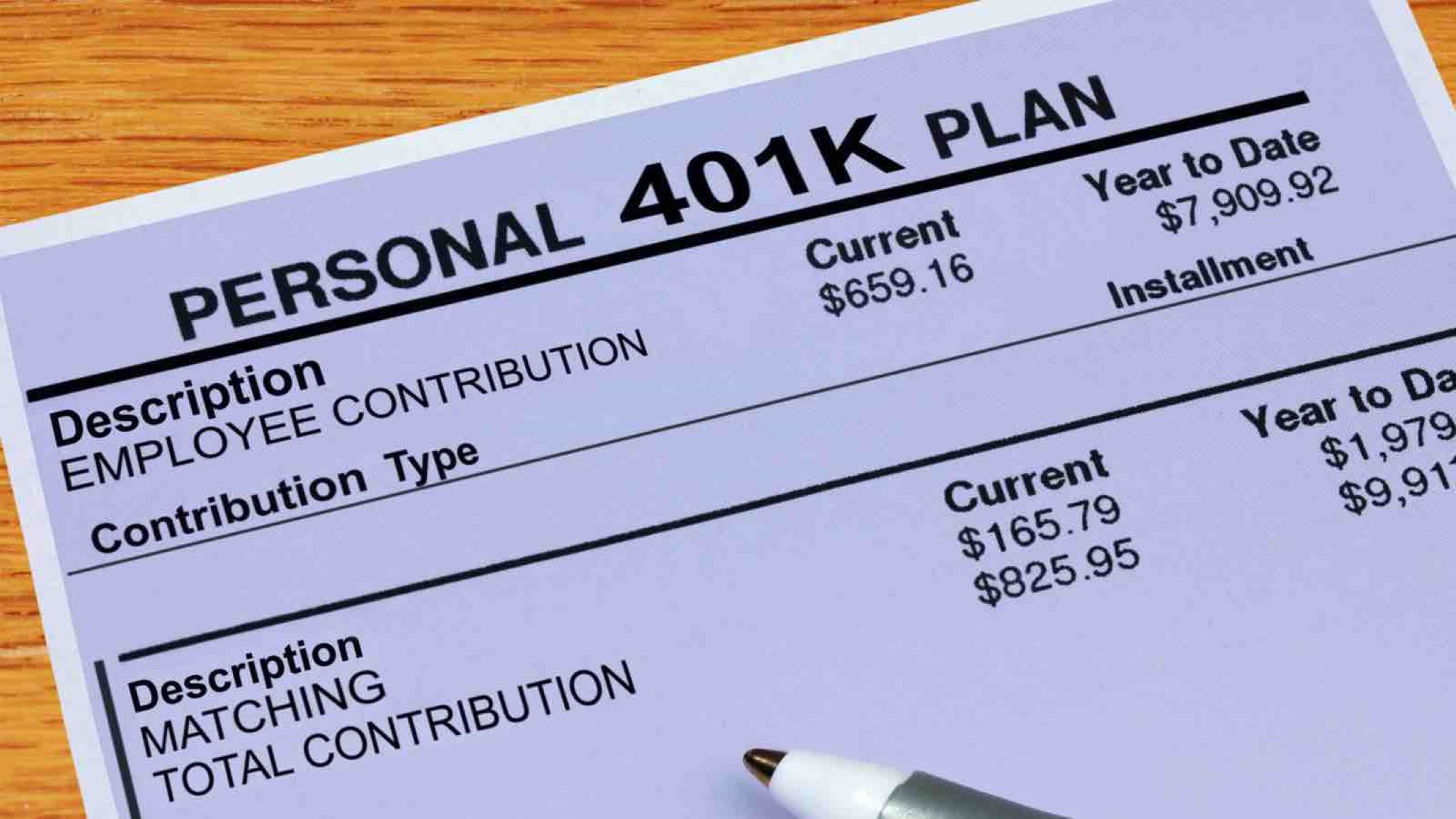

Finance
How To Change My 401K Contribution
Published: October 17, 2023
Discover how to change your 401K contribution and optimize your finances with expert advice from our Finance team. Take control of your future today.
(Many of the links in this article redirect to a specific reviewed product. Your purchase of these products through affiliate links helps to generate commission for LiveWell, at no extra cost. Learn more)
Table of Contents
- Introduction
- Assessing Your Current 401K Contribution
- Understanding Your Employer’s Matching Policy
- Deciding on a New Contribution Amount
- Updating Your Contribution with Your Employer
- Considering the Impact on Your Overall Retirement Savings
- Monitoring and Adjusting Your 401K Contribution Over Time
- Conclusion
Introduction
Welcome to the world of retirement savings! The 401(k) plan is a valuable tool that helps individuals build a nest egg for their golden years. Whether you’re just starting your career or have been contributing to your 401(k) for years, it’s essential to periodically assess and adjust your contributions to maximize your savings potential.
Changing your 401(k) contribution may seem like a daunting task, but with the right information and a clear plan, it can be a straightforward process. This article will guide you through the steps required to change your 401(k) contribution and help you make informed decisions about your retirement savings.
Before we delve into the specifics, it’s crucial to understand the significance of the 401(k) plan. This employer-sponsored retirement savings account allows employees to contribute a portion of their pre-tax salary to be invested in a variety of funds, such as stocks, bonds, and mutual funds. The contributions grow tax-deferred until withdrawal, typically upon reaching retirement age.
Now that you have a basic understanding of the 401(k) plan let’s explore how to assess your current contribution and determine if adjustments are necessary.
Assessing Your Current 401K Contribution
Before making any changes to your 401(k) contribution, it’s essential to evaluate your current savings strategy. Assessing your contribution involves examining the percentage or dollar amount you are currently setting aside for retirement.
Start by reviewing your most recent 401(k) statement to determine your current contribution rate. This rate is usually a percentage of your salary, such as 3%, 5%, or even higher. Take note of whether you are contributing a fixed dollar amount or a percentage of your income.
Next, consider your financial goals and circumstances. Are you on track to meet your retirement objectives? Do you have any upcoming expenses or changes in income that may impact your ability to save? Taking a holistic view of your finances will help ensure that any adjustments to your 401(k) contribution align with your overall financial plan.
It’s also worth understanding your employer’s matching policy. Many companies offer a matching contribution, where they match a certain percentage of your contributions up to a specified limit. Evaluating how much your employer contributes and whether you are maximizing this benefit is crucial.
Finally, assess your risk tolerance and investment strategy. Depending on your age, time horizon, and risk appetite, you may choose to allocate your contributions across different investment options. Make sure your current contribution aligns with your desired asset allocation.
Now that you have evaluated your current 401(k) contribution, it’s time to explore how changes to your contribution can help you achieve your retirement goals.
Understanding Your Employer’s Matching Policy
One of the key factors to consider when changing your 401(k) contribution is your employer’s matching policy. Many companies offer a matching contribution as an incentive for employees to save for retirement. Understanding this policy is crucial as it can significantly impact the growth of your retirement savings.
Start by reviewing the details of your employer’s matching policy, which can usually be found in your employee benefits handbook or by contacting your HR department. Pay attention to the matching percentage and any limits set by your employer. For example, your employer may match 50% of your contributions up to 6% of your salary.
If you are not currently contributing enough to receive the full employer match, consider increasing your contribution to take full advantage of this benefit. The employer match is essentially free money that can significantly boost your retirement savings over time.
However, be mindful of any vesting schedules imposed by your employer. Vesting determines the degree of ownership you have over employer-contributed funds. Some employers have a vesting schedule that specifies how long you must remain with the company before you are fully vested in their contributions. If you plan on changing jobs in the near future, it may impact your decision to maximize your contributions for the employer match.
Understanding your employer’s matching policy will help you determine the optimal contribution amount to make the most of this valuable benefit. Now let’s explore how to decide on an appropriate contribution amount for your retirement savings.
Deciding on a New Contribution Amount
Once you have assessed your current 401(k) contribution and understood your employer’s matching policy, it’s time to decide on a new contribution amount. This decision should be based on your financial goals, future expenses, and overall retirement savings strategy.
Start by considering your retirement goals. How much do you want to have saved by the time you retire? Use retirement calculators or consult with a financial advisor to determine an appropriate savings target. Keep in mind factors such as your desired retirement age, expected lifestyle in retirement, and any additional sources of income.
Next, evaluate your current financial situation and cash flow. Determine how much you can comfortably contribute without significantly impacting your day-to-day living expenses and other financial obligations. It’s important to strike a balance between saving for the future and maintaining a present quality of life.
Take into account any upcoming expenses or life events that may require additional funds, such as buying a house, starting a family, or paying for education. Adjust your contribution amount accordingly to ensure you can meet these short-term goals while still making progress towards your long-term retirement savings.
Consider your risk tolerance and investment strategy when deciding on a contribution amount. If you are more risk-averse, you may choose to contribute a higher percentage to take advantage of the tax benefits and potential long-term growth. On the other hand, if you prefer a more conservative approach, you may opt for a lower contribution rate and focus on other investment vehicles.
Remember, it’s not a one-size-fits-all approach. Your contribution amount should align with your individual financial circumstances and objectives. It’s okay to start small and adjust gradually over time as your financial situation evolves and you become more comfortable with saving.
Once you have determined your new contribution amount, it’s time to take the necessary steps to update your contribution with your employer.
Updating Your Contribution with Your Employer
After deciding on a new contribution amount for your 401(k), the next step is to update your contribution with your employer. The process for updating your contribution may vary depending on your company’s procedures, but here are some general steps to follow:
- Review your 401(k) plan documentation or consult with your HR department to understand the process for changing your contribution amount. Some employers may require you to complete a form, while others may have an online portal for making changes.
- Gather the necessary information. You will likely need to provide your employee identification number, the percentage or dollar amount of your desired contribution, and the effective date of the change.
- Complete the required form or navigate to the appropriate section of your employer’s online portal. Enter the requested information accurately.
- Submit your contribution change request. Ensure that you receive confirmation of the change and retain a copy for your records.
It’s important to note that some employers have specific deadlines or cut-off dates for making contribution changes. It’s wise to be aware of these deadlines and plan accordingly to avoid any delays in updating your contribution amount.
After submitting your contribution change request, take the time to verify that the change has been successfully implemented. Check your next paycheck or review your online account to ensure that the updated contribution amount is being deducted.
Keep in mind that some employers may have restrictions on how often you can change your contribution amount. For example, they may only allow changes on a quarterly or annual basis. If you are unable to make immediate changes, mark your calendar to reassess and update your contribution when the designated time frame arrives.
With your new contribution amount in place, it’s important to understand the potential impact on your overall retirement savings.
Considering the Impact on Your Overall Retirement Savings
Changing your 401(k) contribution can have a significant impact on your overall retirement savings. It’s essential to consider the potential effects and evaluate how the adjustment aligns with your long-term financial goals.
One of the primary considerations is the potential growth of your retirement savings. By increasing your contribution, you are effectively allocating more funds towards your retirement account. Over time, this can lead to a larger nest egg and potentially a more comfortable retirement.
On the other hand, increasing your contribution may mean allocating more of your current earnings towards retirement savings, which can impact your immediate disposable income. It’s crucial to ensure that you can comfortably sustain your desired contribution level without compromising your daily living expenses and other financial obligations.
Conversely, if you decrease your contribution amount, you may have more disposable income in the short term. However, this decision may result in a smaller retirement fund and potentially impact your ability to meet your retirement goals.
Furthermore, it’s important to remember the tax advantages of 401(k) contributions. Contributions are typically made on a pre-tax basis, meaning they reduce your taxable income for the current year. This can result in immediate tax savings. Conversely, reducing your contribution may increase your taxable income.
Consider the potential impact of compounding returns as well. The longer your retirement funds are invested and generating returns, the greater the potential growth of your savings. By adjusting your contribution amount, you may influence the overall growth rate of your retirement portfolio.
It’s also worth noting that making changes to your 401(k) contribution should not be a one-time decision. Reevaluate your contribution periodically, especially when there are changes in your financial situation, such as a raise or a significant expense. Regularly monitoring and adjusting your contribution can help ensure you stay on track towards your retirement goals.
By carefully considering the impact on your overall retirement savings, you can make informed decisions about your 401(k) contribution and work towards a secure financial future.
Monitoring and Adjusting Your 401K Contribution Over Time
Setting your 401(k) contribution is not a “set it and forget it” task. It’s essential to monitor and adjust your contribution over time to ensure that it remains aligned with your changing financial circumstances and retirement goals.
Regularly review your 401(k) statements and track the growth of your retirement savings. This will give you a sense of how your contributions are performing and whether adjustments are necessary. Ideally, aim to review your statements at least once a year or after significant life events, such as a job change or a pay increase.
Consider meeting with a financial advisor to assess your overall retirement plan. They can help you evaluate your current contribution amount, investment strategy, and long-term objectives. They may also provide guidance on other retirement savings vehicles, such as IRAs or Roth IRAs, that can complement your 401(k) contributions.
Stay informed about changes in tax laws and retirement regulations. These changes can impact the contribution limits, tax benefits, and withdrawal rules for retirement accounts. By staying updated, you can make educated decisions about your 401(k) contributions and take advantage of any available opportunities.
Prioritize increasing your contribution when your financial situation allows. As you progress in your career and experience salary raises or bonuses, consider allocating a portion of those additional earnings towards your retirement savings. Gradually increasing your contribution can have a significant impact on your long-term savings potential.
Reassess your contribution if you experience significant life events or changes in financial circumstances. For example, if you start a family, you may need to adjust your contributions to account for additional expenses. Similarly, if you receive an inheritance, it may be an opportune time to increase your retirement savings.
Regularly revisit your risk tolerance and investment strategy. As you get closer to retirement, you may want to adjust your allocation of funds in your 401(k) to minimize risk and preserve capital. Be mindful of any investment options offered by your employer and consider diversifying your portfolio to spread risk.
Lastly, seek advice and insights from financial experts or peer support networks. Engaging in discussions with fellow 401(k) participants or joining retirement planning communities can provide valuable insights and perspectives on managing your retirement savings.
Remember, your 401(k) contribution should evolve as your financial situation and retirement goals change. By regularly monitoring and adjusting your contributions, you can stay on track to achieve a secure and comfortable retirement.
Conclusion
Changing your 401(k) contribution is a crucial step in ensuring that you are effectively saving for your retirement. By assessing your current contribution, understanding your employer’s matching policy, and deciding on a new contribution amount, you can take control of your financial future.
Updating your contribution with your employer is a straightforward process that usually involves completing a form or making changes through an online portal. Be sure to understand any deadlines or restrictions imposed by your employer and verify that the changes have been implemented correctly.
Consider the impact of your contribution adjustment on your overall retirement savings. Evaluate factors such as potential growth, tax advantages, and your risk tolerance. Regularly monitor and adjust your contributions as necessary, taking into account changes in your financial situation and retirement goals.
Remember, saving for retirement is a long-term commitment. It’s essential to stay informed, seek professional advice when needed, and regularly review and adjust your contributions to align with your evolving financial landscape and retirement objectives.
By taking these steps, you can maximize the benefits of your 401(k) plan and work towards building a secure and comfortable retirement. So, take control of your 401(k) contribution today and set yourself on the path to a brighter financial future.














